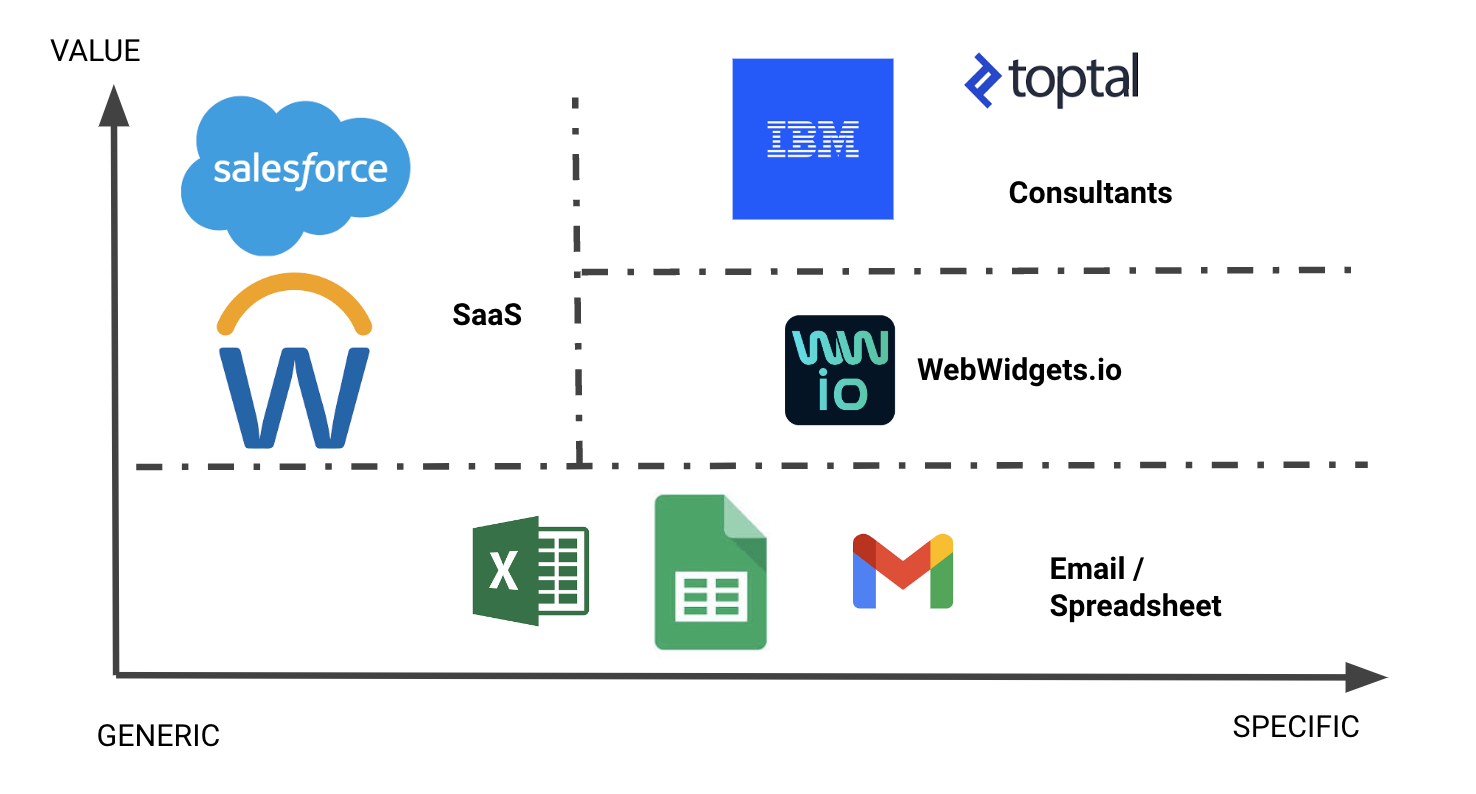Many Software-as-a-Service (SaaS) companies get started in the same way. The founders notice that an established company is running a very important workflow from an Excel spreadsheet (possibly they're the ones who are in charge of that workflow). They realize that the operation would be far more efficient and scalable if it was supported by a software solution that was designed for the purpose. This application would have a better user interface, it would be less error prone, it would have better integration with other tools, and so on. These factors, combined with the importance of the workflow, would make the parent company happy to purchase a license to the solution. Not only that, but many other companies, running similar operations, would also become enthusiastic customers of the new product. So the founders set off on their own to create the new software and bring it to the market.
This story relies on one very important fact about the market for the new SaaS product: it has to be big and valuable enough to justify significant investment. Building a SaaS product is not a small undertaking. You need to deal with software development, cloud services management, sales and marketing, and so on. The founders will likely need to hire software engineers, sales executives, lawyers, and other experts. To pay for these expenses, the founders will probably try to raise Venture Capital, and VCs will want to see the potential for a huge return on their investment. So for the SaaS approach to work, it's critical that the potential customer base is large and wealthy.
Unfortunately for them, many smaller organizations are running important workflows that are too unique or specialized for the SaaS story to work. An entrepreneur would have to be crazy to start a software business whose only customer is a 5-person nonprofit. So the employees of these organizations continue to work in Excel or Google Sheets, and this work is often tedious, error-prone, and inefficient.
One of the main goals of WebWidgets.io is to help these small organizations and their employees. Our strategy is to make it economically and technologically feasible to build "lightweight" SaaS apps that deliver 90% of the value of a full-fledged solution, at 10% of the price. This diagram shows the WWIO Value Zone:

This diagram is organized in terms of two factors related to a workflow that needs software support. The X-axis measures how generic or specific the workflow is, while the Y-axis shows its value to the organization. The bottom area contains just low-value workflows, that don't justify significant investment, so there's no reason to use any special software; a shared Google Sheet is fine. The upper-left zone is the domain of the big SaaS companies. These are workflows which are both valuable, and quite generic to many organizations. Two examples are Customer Relationship Management (Salesforce) and payroll / benefit management (Workday).
The upper-right is the zone where it makes sense to bring in serious outside consulting expertise to build a custom solution. This zone is dangerous and scary, because software consulting services are expensive, and IT projects often fail (as a recent example, an IT project built by Deloitte for the state of Tennessee cost $400 million, and doesn't work very well). But if your organization is wealthy enough, and the workflow is important enough, this option makes sense.
The middle area on the right is what we call the WWIO Value Zone. This is where the workflow is important enough to require good software support, but it's too unique to use an off-the-shelf SaaS, and the company isn't wealthy enough to hire outside consultants. Using WWIO, companies can build lightweight apps that deliver 90% of the value of a full-fledged app, for 10% of the price. This allows us to come to the rescue of small organizations that need better software, but cannot afford the price tag associated with custom development projects. For some real-world examples of our approach, check out our Demos page.
For savvy executives, there's actually a way that WWIO can help bigger organizations, because it can be used as a rapid prototyping platform. Suppose your company is contemplating a big IT project, but you're aware that these projects have big price tags and often fail. One excellent technique for minimizing the risk is to build an early prototype that illustrates the main features. The process of rapid prototyping often helps to clarify the conceptual issues and highlight the core challenges of the project. In order to be helpful, the initial prototype work should be fast and inexpensive, and that is exactly what the WWIO platform offers. Furthermore, because of WWIO's use of standard web technologies (JavaScript/HTML/CSS), much of the initial development can be reused for the final product (learn more about how WWIO protects you from Lock-In). So using WWIO to build an initial version of a product that will eventually be scaled up, is an excellent way to derisk a big IT project.

